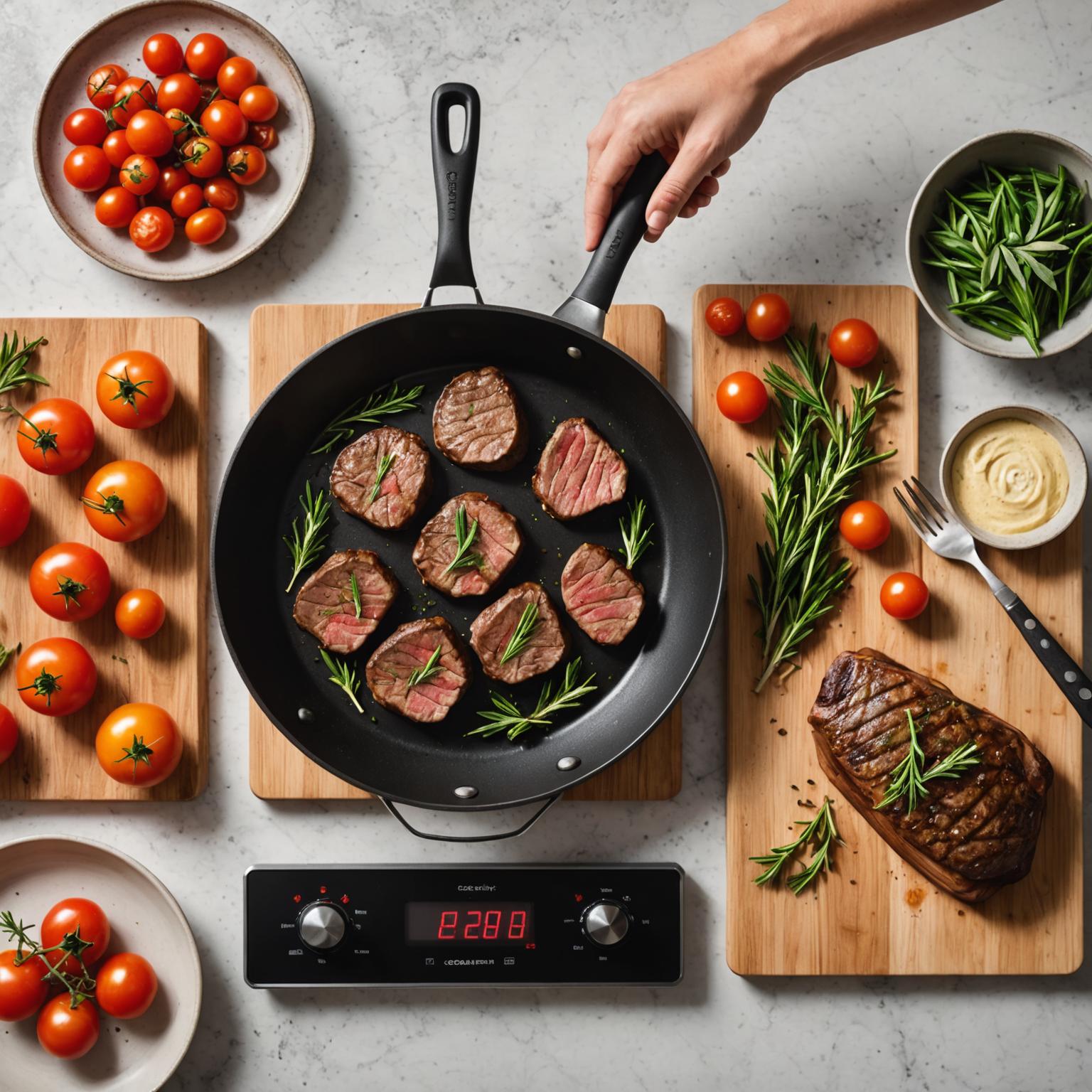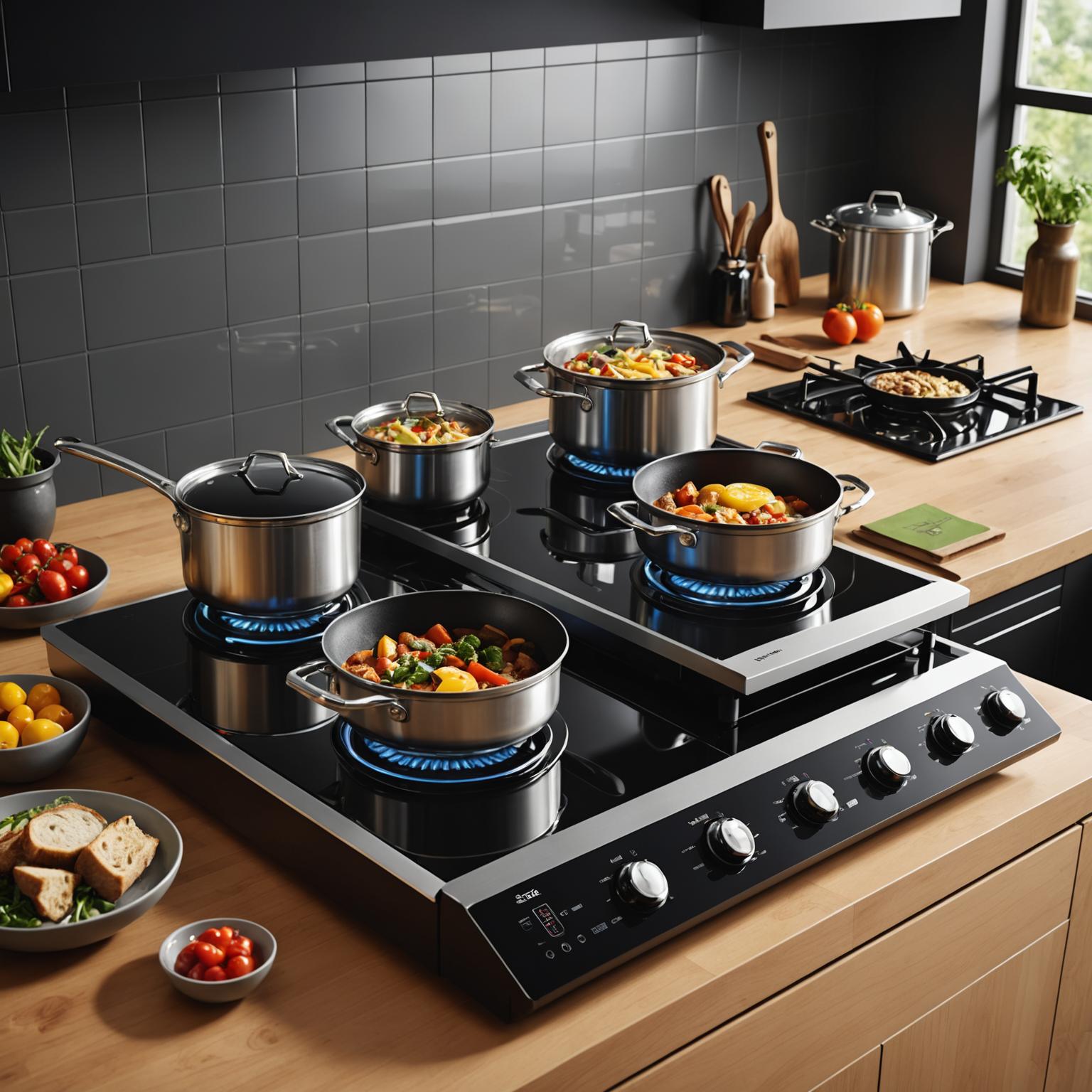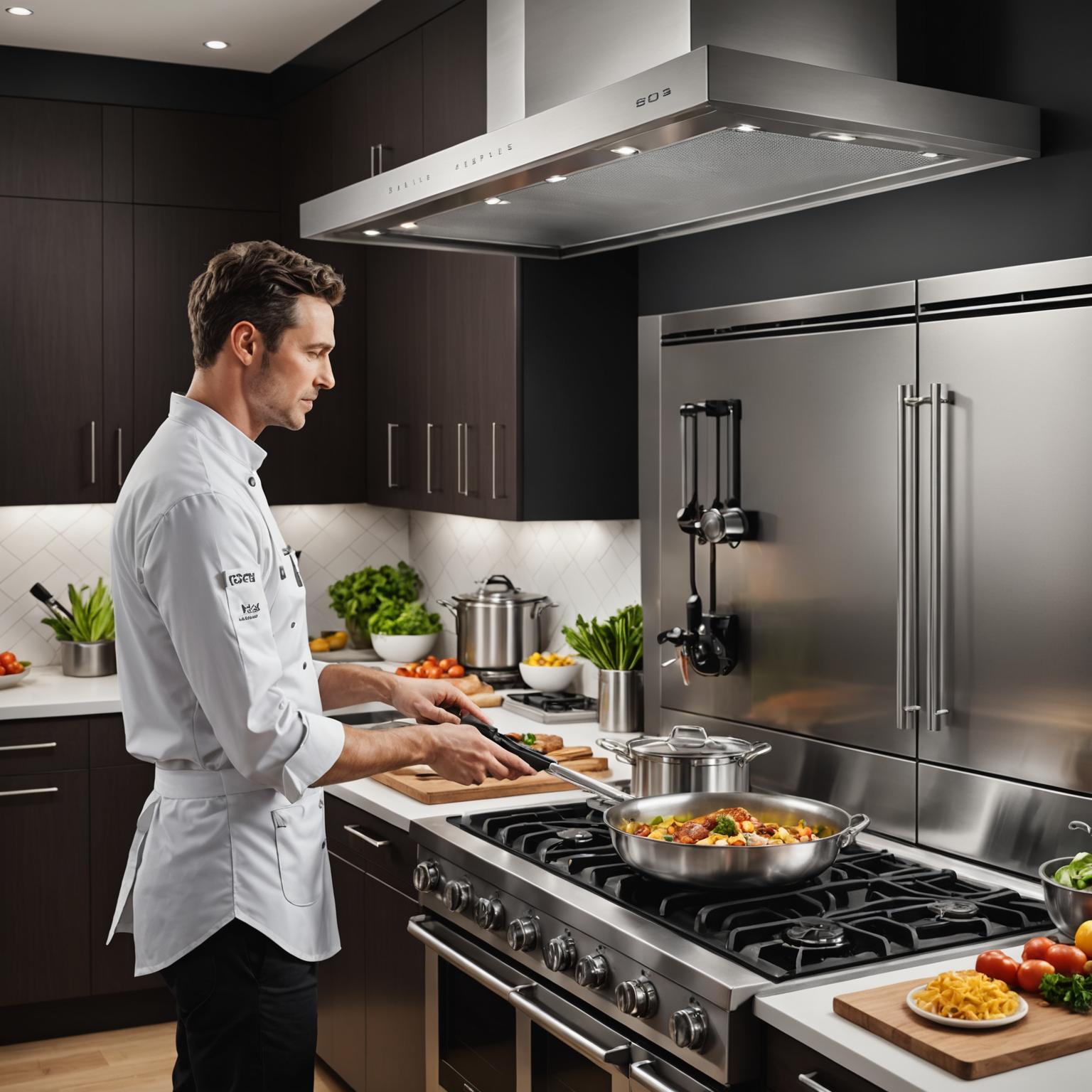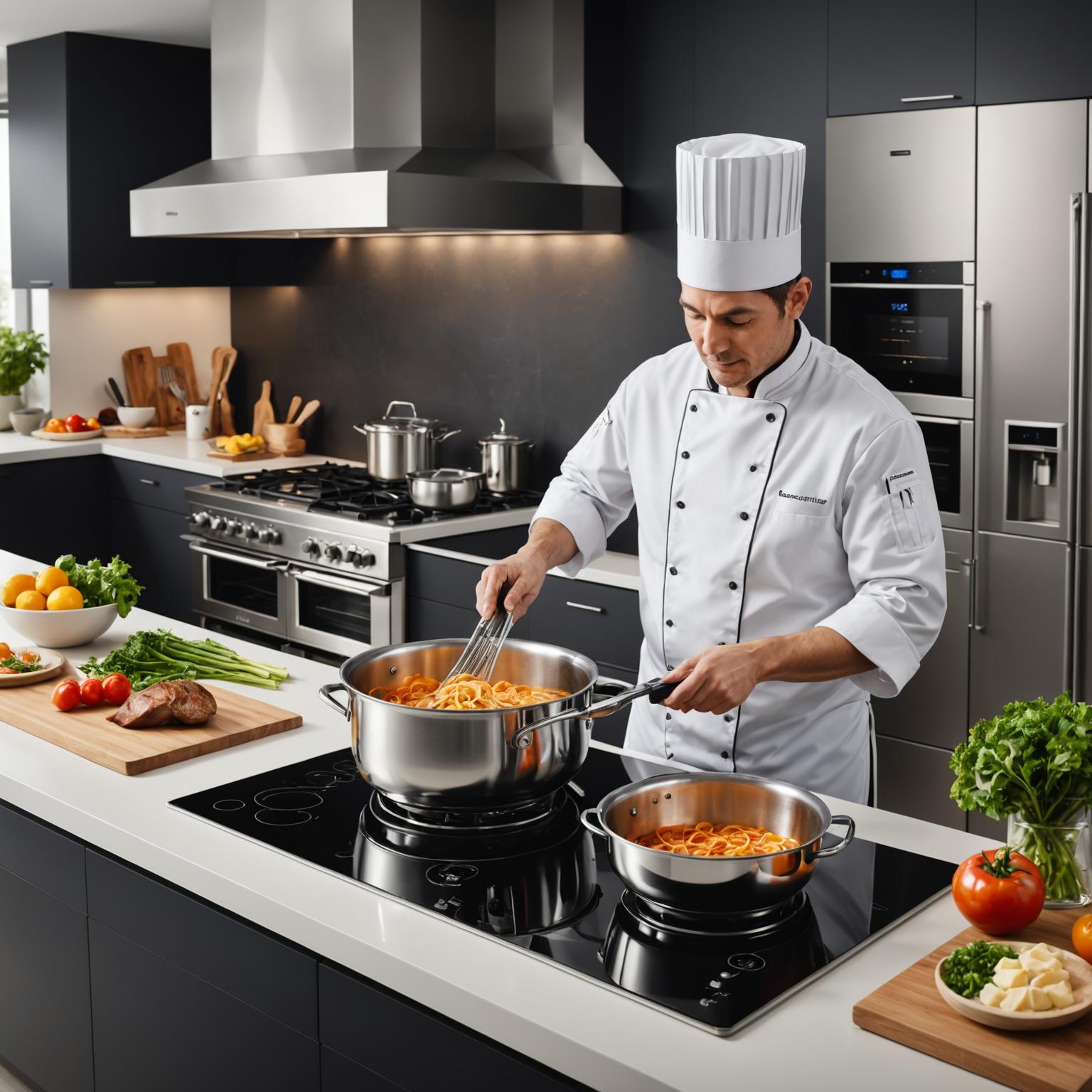The modern kitchen is evolving, and with it, our cooking appliances. A portable stove is no longer just for camping trips or dorm rooms; it has become a sophisticated and indispensable tool for home cooks seeking flexibility, efficiency, and extra cooking space. Whether you're hosting a large dinner party and need an extra burner, or you live in a compact space where a full range isn't feasible, these versatile devices offer a powerful solution. They bring advanced cooking technology to any countertop, transforming the way we prepare meals with convenience and style.

When exploring the world of portable cooktops, the primary choice often comes down to two technologies: electric and induction. A traditional electric portable stove operates using thermal conduction. An internal heating coil or halogen bulb heats the ceramic or glass surface, which in turn transfers that heat to your pot or pan. This method is straightforward and compatible with nearly any type of flat-bottomed cookware. In contrast, an induction portable stove utilizes a more advanced method. It generates a high-frequency electromagnetic field, which directly excites the iron molecules within magnetic cookware, causing the pot itself to become the heat source. This fundamental difference is the key to induction's superior performance in many areas. Because induction heats the vessel directly, very little energy is wasted, making it significantly more efficient and faster than its electric counterpart. Furthermore, the cooktop surface remains much cooler, reducing the risk of accidental burns and making cleanup easier as spills are less likely to bake on.
Beyond the heating technology, portable cooktops vary widely in design and functionality, catering to different culinary needs. For instance, a sleek, minimalist induction portable stove often features a single, smooth glass-ceramic surface with precise controls, such as a simple dial. This design is perfect for tasks requiring meticulous temperature management, from gently simmering sauces to achieving the perfect sear on a steak. It's an elegant addition that complements a contemporary kitchen aesthetic. On the other hand, some models of the electric portable stove are designed as multi-function cookers. These appliances, often with a durable cast construction, act as an all-in-one pot for creating hearty stews, soups, and braised dishes. They offer unparalleled versatility, allowing you to slow cook, steam, and simmer within a single, compact unit, making them ideal for those who enjoy one-pot meals and want to maximize counter space without sacrificing culinary creativity.
For many home chefs, speed is a critical factor. The ability to bring water to a rapid boil or heat a pan quickly can dramatically shorten prep and cooking times. This is where a fast heating portable stove, particularly an induction model, truly shines. Thanks to its direct heating mechanism, an induction cooktop can boil water up to 50% faster than a conventional electric or gas stove. This efficiency not only saves time but also conserves energy. A fast heating portable stove is a game-changer for busy weeknight dinners, quick breakfasts, and any recipe that calls for high-heat searing. The immediate response to temperature adjustments on an induction unit also provides a level of control that rivals professional gas ranges, allowing for instant transitions from a rolling boil to a gentle simmer, preventing overcooking and ensuring perfect results every time.
Ultimately, the decision between an electric and an induction model depends on your specific priorities. If you have a diverse collection of cookware and value simplicity and a lower initial cost, a classic portable stove or a versatile multi-cooker might be the perfect fit. However, if your focus is on speed, energy efficiency, safety, and precise cooking control, investing in an induction cooktop is an excellent choice, provided you have or are willing to purchase magnetic cookware. Both options offer the incredible benefit of expanding your cooking capabilities and adding a touch of modern convenience to your kitchen. By understanding their key differences, you can select the perfect appliance to elevate your culinary adventures.

Electric vs. Induction: Understanding the Core Differences
When exploring the world of portable cooktops, the primary choice often comes down to two technologies: electric and induction. A traditional electric portable stove operates using thermal conduction. An internal heating coil or halogen bulb heats the ceramic or glass surface, which in turn transfers that heat to your pot or pan. This method is straightforward and compatible with nearly any type of flat-bottomed cookware. In contrast, an induction portable stove utilizes a more advanced method. It generates a high-frequency electromagnetic field, which directly excites the iron molecules within magnetic cookware, causing the pot itself to become the heat source. This fundamental difference is the key to induction's superior performance in many areas. Because induction heats the vessel directly, very little energy is wasted, making it significantly more efficient and faster than its electric counterpart. Furthermore, the cooktop surface remains much cooler, reducing the risk of accidental burns and making cleanup easier as spills are less likely to bake on.
Beyond the Basics: Functionality and Design
Beyond the heating technology, portable cooktops vary widely in design and functionality, catering to different culinary needs. For instance, a sleek, minimalist induction portable stove often features a single, smooth glass-ceramic surface with precise controls, such as a simple dial. This design is perfect for tasks requiring meticulous temperature management, from gently simmering sauces to achieving the perfect sear on a steak. It's an elegant addition that complements a contemporary kitchen aesthetic. On the other hand, some models of the electric portable stove are designed as multi-function cookers. These appliances, often with a durable cast construction, act as an all-in-one pot for creating hearty stews, soups, and braised dishes. They offer unparalleled versatility, allowing you to slow cook, steam, and simmer within a single, compact unit, making them ideal for those who enjoy one-pot meals and want to maximize counter space without sacrificing culinary creativity.
The Need for Speed: Fast Heating Capabilities
For many home chefs, speed is a critical factor. The ability to bring water to a rapid boil or heat a pan quickly can dramatically shorten prep and cooking times. This is where a fast heating portable stove, particularly an induction model, truly shines. Thanks to its direct heating mechanism, an induction cooktop can boil water up to 50% faster than a conventional electric or gas stove. This efficiency not only saves time but also conserves energy. A fast heating portable stove is a game-changer for busy weeknight dinners, quick breakfasts, and any recipe that calls for high-heat searing. The immediate response to temperature adjustments on an induction unit also provides a level of control that rivals professional gas ranges, allowing for instant transitions from a rolling boil to a gentle simmer, preventing overcooking and ensuring perfect results every time.
Choosing the Right Portable Stove for Your Kitchen
Ultimately, the decision between an electric and an induction model depends on your specific priorities. If you have a diverse collection of cookware and value simplicity and a lower initial cost, a classic portable stove or a versatile multi-cooker might be the perfect fit. However, if your focus is on speed, energy efficiency, safety, and precise cooking control, investing in an induction cooktop is an excellent choice, provided you have or are willing to purchase magnetic cookware. Both options offer the incredible benefit of expanding your cooking capabilities and adding a touch of modern convenience to your kitchen. By understanding their key differences, you can select the perfect appliance to elevate your culinary adventures.







